Lysa Graine - Mistress of the Irish Seas
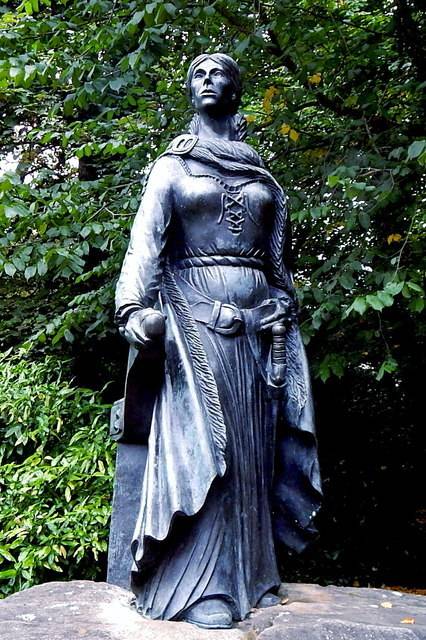
From Clan O'Malley
The name of the father of the future pirate is translated as Black Oak, and he was the leader of the clan O'Malley. Their community occupied territory in the modern county of Mayo, in the west of Ireland. The only source of food for the residents was water, so the clan members were skilled sailors. Other Irishmen said that O'Malley was both born and died under sail.
An important role in the lives of people played trade. While some members of the clan were fishing on small, leather-trimmed boats, others, having equipped impressive ships, went to Scotland and Spain. Here, O'Malley traded livestock, wool, and animal skin for textiles, wine, and various other goods. In addition, each member of the clan was not just a fisherman or a trader, but, in the first place, was a skilled warrior. After all, the ships now and then attacked both robbers and competitors from other clans. In general, the life of the Irish in the sixteenth century was not sugar.
Chief Owen differed wild character. Therefore, he managed to quarrel with almost all neighboring clans. Because of this, the O'Malley merchant ships always went to sea, taking with them a few dozen young warriors. Owen himself lived in the castle Carrigauly. On the lower floor of this stone tower kept cattle, and people lived on the upper tiers. In Karrigauli, Graine was born in 1530. I must say, the Irish men gave their women a lot of freedom. But still, there were certain prohibitions for them. For example, they were not allowed to go to sea. The Irish believed it would bring bad luck. However, Owen loved his daughter so much that he didn't give a damn about bans. He had to go against the principles after Graine’s wayward deed: she cut her hair off to look more like a man. The people accepted it ambiguously, they kept whispering behind the leader’s back and forth, but did not dare go against his will. Further more. When Graine grew older, the leader allowed her not only to fish, but also to take part in battles. Mother, of course, was opposed, they say, is not a woman's business. However, neither her husband nor daughter listened to her.
When Graene was sixteen, her father died suddenly. It is not known exactly what happened to him. According to one version, Owen caught fever during the voyage. According to another, the enemies poisoned him because they could not cope with the leader O'Malley by force.
There is a legend that says that Graine fought with her younger brother Indulf on knives for the right to become the new leader of the clan. A relative was defeated and recognized her superiority. But this legend has nothing to do with reality. The fact is that the leader of the clan was chosen by the elders. There could be no duel. In addition, Graine had only Domnall's brother, who was nicknamed Piper. It did not make sense to challenge him to a duel, regardless of the outcome of the confrontation, the elders would never have given power to the hands of a woman. So after the death of Owen, the Piper became the new leader. And his sister was given for the brother's namesake - Domnalla Militant. He was a tannist (first assistant to the leader) of the powerful clan O'Flaherty. Domnall fully justified his nickname, like Father Graine, he now and then fought with one of his neighbors. Here are just these wars were very peculiar: most often Domnall led his clan to steal other people's cows.
Married Graine gave birth to three children - Owen, Merrow and Margaret. But the quiet and peaceful life of the keeper of the family hearth soon bored the woman. And then she decided to return to the sea.
Trick or Treat?
Graine's husband was excellent flotilla. Yes, that's bad luck, Domnall preferred stealing cattle, and not engage in robbery. Therefore, the woman easily managed to enlist the support of sailors yearning for raids.
Rising at the head of the flotilla, Bald Graine soon became the main one not only in her native Mayon, but also controlled the shores of the neighboring counties of Claire and Galway. Her fleet consisted of light and fast galleys, so it was easy for them to catch up with the slow and heavy merchant ships. In addition to piracy, Greyne often resorted to the beloved "maneuver" of the robbers of the time - racketeering. The rich, knowing her cool temper, meekly paid off, gaining a guarantee of security for impressive sums.
I must say, Ireland at that time only formally submitted to England. The clans still maintained independence and gave a heroic rebuff to English laws and customs. The inhabitants of Albion, too, were not very eager to get involved in a protracted and painful war with the Irish. Therefore, they preferred the tactics of punitive expeditions against already completely impudent leaders. And such was the husband of Graine. Therefore, once the British ships appeared near the generic castle O'Flaherty. Domnall himself was absent at that time, so Grayne assumed the defense. First of all, she ordered to melt the lead roof of the stone tower and pour the metal on the English heads. While there was a fight, the woman managed to get on the upper platform of the castle and set fire to the brushwood there.
A column of smoke saw the flotilla Graine. The ships had time and smashed the ship the British. After this victory, the power of the woman has become much more powerful than her husband.
True, Graine had to enjoy the greatness and power for long. In 1560, Domnall died in another skirmish with his neighbors. The elders rebelled against Graine and, fearing for the lives of the children, was forced to abandon the role of leader. And together with a couple of hundreds of followers, she returned to her native clan. Brother, of course, she was not particularly needed. Therefore, he singled out Claire Island to her, thereby securing her own life.
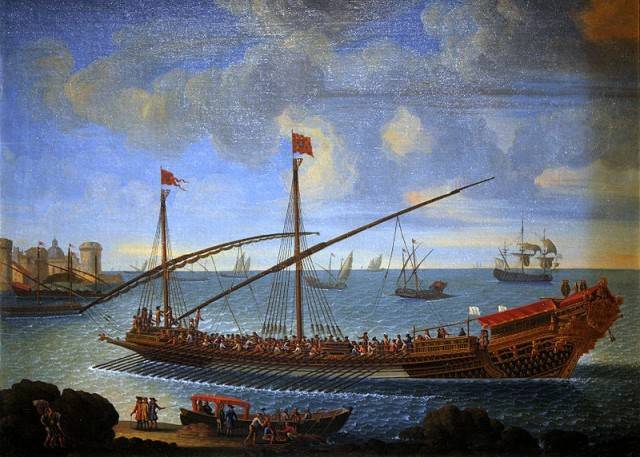
The gift of the brother fell Grain liked. A piece of land was located in a very favorable geographical location - right next to the busiest trade routes. Accordingly, Greine returned to the pirate lifestyle.
The tragic love and attempt №3
Despite the robberies, Graine considered herself a devout woman. Therefore, after each successful "hunt", she went to the local chapel to pray at the well of St. Bridget to atone for sins. Just on the way to the next confession, a woman saw the remains of a ship crashed on the shore. And next to it is a handsome and richly dressed man. He turned out to be an Englishman, Hugh de Lacy, descended from the kind of graphs of the Ulsters. It seemed that Graine now certainly found her feminine happiness. But ... six months later, de Lacy was killed. On the shores of Mayo, he was killed by representatives of the clan MacMahons. For the atrocity they paid off with their own lives. Graine and her warriors cut all the Makmaghons under a clean one and captured their main fortress - Dunu Castle.
After some time, Graine was able to subdue the entire coast of Mayo. Outside of her power was only one castle. The fortress, bearing the name Rockfleet, belonged to Richard of the Berkov clan, known as Iron. The people of Greine began to prepare for war with him, but the woman suddenly changed her principles. Instead of fire and sword, she chose the most effective - the bed. And soon, Richard and Graine married the Irish custom. This means that their marriage was, so to speak, trial and lasted a year. And after the couple have already married under all the laws, or divorced. Grain was enough a year to settle in Rockflite. And when the time of marriage expired, she simply did not let her husband into the castle, saying to him: “Go away, I will get divorced”. Iron Richard accepted such a “gift of fate” with dignity. Revenge Grayne he did not. Moreover, thanking for her son, the man promised her protection.
There is a legend telling that Graine went on a robbery the very next day after giving birth. But instead of a hunter, she suddenly became prey - her ship was attacked by Algerian pirates. Irish flinch. And then Vrayne managed somehow to get on the deck of the enemy ship and shouted: “Do not be shy, guys! Give birth much worse, you can believe me! ”After that, the Algerians were defeated.
Magic sea horse
Meanwhile, 1577 was already a year old, almost all the clans of western Ireland submitted to England. Graine also had to bow to the new owners. In Galway, Captain Henry Sidney received her. This is how he described the meeting with the famous pirate: “The most famous woman captain, Grania Imalli, came to me, offering me the services of her three galleys and 200 soldiers.”
According to legend, at the age of forty-seven, Graine fell in love again. Her chosen one this time was the captive Spanish nobleman Ramiro de Moline. The woman took him to the clan and took with them to the sea. And even though de Molina showed himself to be a skilled warrior, he yearned very much for his native Castile. Gathering her courage, Graine did not by force keep Ramiro by her side ...
Although by the standards of that time Grain was already in her old age, this did not prevent her from going to campaigns with enviable regularity and to personally participate in battles. According to legend, once she took with her young Tibbot (son of Iron Richard). Of course, he was very frightened and pressed against his mother's feet. In response to this, Verne pushed away her son and said: “Do you want to hide where you once left? Will not work! Come on! ”
The sailing sea horse was depicted on the sails of the Lysa Graine flotilla. He was known to all seafarers who traveled off the coast of Ireland and Spain. Therefore, very often they preferred to surrender without a fight, knowing who their rivals were. But Grayne sometimes lost the fight. For example, once she was captured by the British and chained, sent to Dublin Castle. The woman knew that this was a death sentence, since the Irish almost never returned from there. But somehow she managed to escape. According to legend, since then she had another nickname - the witch from Rockfleet.
In the eighties of the sixteenth century, Richard Burke died and Sir Richard Bingham became the new governor of Connacht. He, as they say, began from the spot - into the quarry. Wanting to build an outstanding career, Bingham decided to end with all the recalcitrant Irish clans and leaders. Well, the first on the list he had the clan O'Malley.
Bingham acted decisively. He managed to ruin the lands of the clan and capture the son Graine Owen. She didn’t see him again - he was killed. The second son, Merrow, unexpectedly went over to the side of the British and in every way helped in the hunt for his own mother. But it was extremely difficult to take Graine. The woman understood that the situation is unlikely to change in her favor. The forces were unequal - the British seriously took up the conquest of Green Island. Therefore, she, trying to somehow appease Bingham, took part in the defeat of the Spanish Invincible Armada. But this attempt was in vain. The governor tried to catch the queen of the Irish pirates with enviable obstinacy. Grayne had one way out - the most disgusting for her ... She sent letters to Elizabeth, the Queen of England. This is what the woman wrote: “Your Majesty humbly appeals to your loyal and devoted subject Grania Ne Malley, who lives in your Irish possessions. Since the Irish, especially on the coast of West Connaught, there is a regrettable custom, according to which every leader in order to protect himself and his people must weapons to oppose the neighbors, I, Your Majesty's devoted servant, for forty years also have to force my people to protect at sea and on land ”.
She also added that she was ready to “collapse with fire and sword on all the enemies of the queen”. In return, Graine requested protection from the stubborn Bingham.
In alliance with the British
The queen replied in a peculiar way to the pirate’s letter — she sent her about twenty questions. This kind of test was to determine whether the Irish robber. Perhaps Greyne would have refused to attempt to improve relations with Elizabeth, but she had no choice. The fact is that Bingen was not idle. He again attacked the lands of O'Malley, having managed to capture the brother Graine and her son Tibbot.
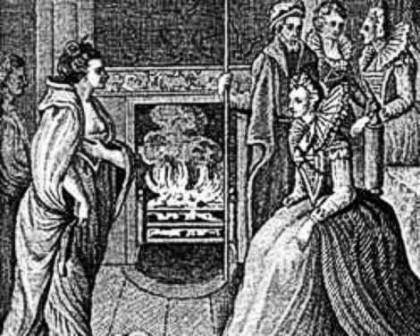
Gathering her courage, the Irish went to the reception to the queen. Given her status and reputation, for Grain, this idea could well have ended in prison or execution.
Rogue and Queen met in August 1593 of the year. By the way, this event was sealed in engraving. Elizabeth reacted favorably to the guest: "Because she repented of her former disobedience and promised to participate on our side in the howl that we lead with the whole world." By "the whole world," the queen meant a confrontation with Spain, which was still in force. In addition, there was a real prospect of her alliance with France against England. And the queen perfectly understood that she needed an ally in the person of the leader of the Irish pirates. Yes, and the empress had a positive experience of cooperation with pirates - to recall at least Francis Drake. Therefore, she ordered the release of Graine’s relatives and forbade Bingham to crush the O'Malley clan.
Shortly after returning home Graine had to work out a contract with the Queen of England. Count Tirconnell rebelled against the British, and the Irish had to attack his land. After that, she returned to her favorite occupation - piracy. At this time, Clifford became the new governor of Connaught. He continued the work of his predecessor Bingham - with new forces attacked the clan O'Malley. Graine understood that there was no sense in union with the British. But the worst thing awaited the woman ahead. Her youngest son, Tibbot, as Merrow had once been, suddenly turned to the British. Moreover, he personally participated in the search for his rebellious mother. She did not forgive betrayal and renounced her son.
In 1598, the rebel clans managed to inflict several defeats on the English. Encouraged by the victories, they remembered the Graine's betrayal. Therefore, O'Malley was ravaged by the land. From the embittered compatriots Graine had to hide in his fortress on the island of Clare. And the Irish rebels continued to fight against the hated British. That's just their fuse lasted briefly. In 1602, the Irish were defeated at the Battle of Kinsale. For all residents of the Green Island, this meant one thing - the enemy still managed to win in many years of confrontation. Discouraged and hopeless people began to leave their homes. And their place was immediately occupied by English settlers.
Greene was gone in 1603 year. According to one legend, she died in battle, according to another - she died quietly in the castle of Rockflite. They buried her in her favorite chapel on Claire Island. On the gravestone made the inscription: Terra Marique Potens, which can be translated as "Strong on land and at sea." To our days, the tomb of the Queen of the Irish pirates did not live. She was ransacked several years after Graine’s death. But the very same chapel on the island has been preserved.
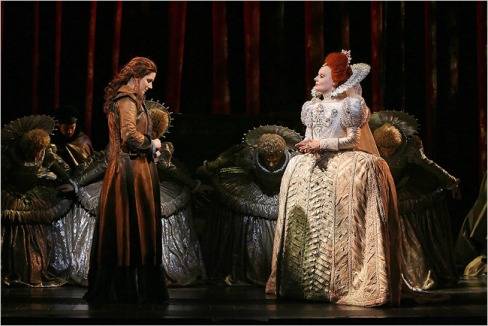
After Greine’s death, only bards who performed ballads about The Mistress of the Irish Seas kept her memory. But only in the late eighties of the twentieth century, interest in the pirates broke out with unprecedented force. It was the writer Anne Chambers who published the novel Granular, the Pirate Queen. Soon, based on this work, the musical “Grandia” was staged. In 2006, the play “The Queen of the Pirates” appeared, a bit later - the rock opera “Granual”. And the Irishman Gavin Dunn from the musical project Miracle of Sound, composed a song called “Grainne Mhaol Queen Of Pirates”. This single has become one of the main in the album "MetalUp".
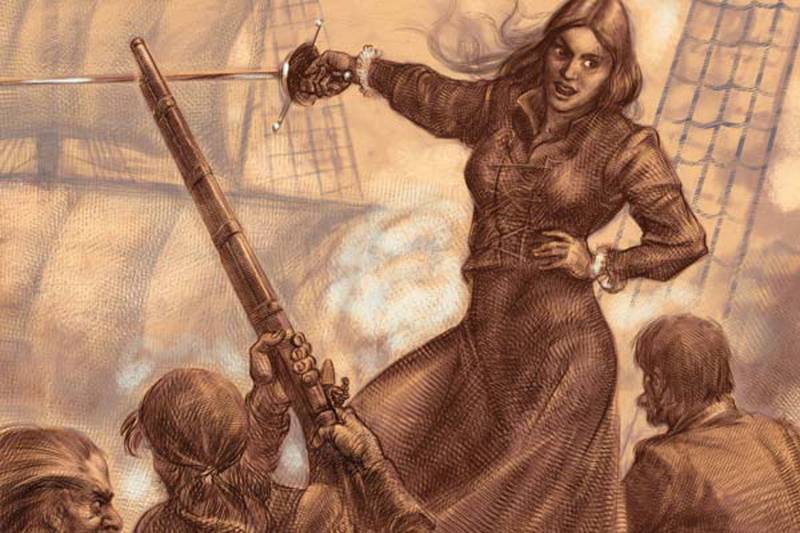
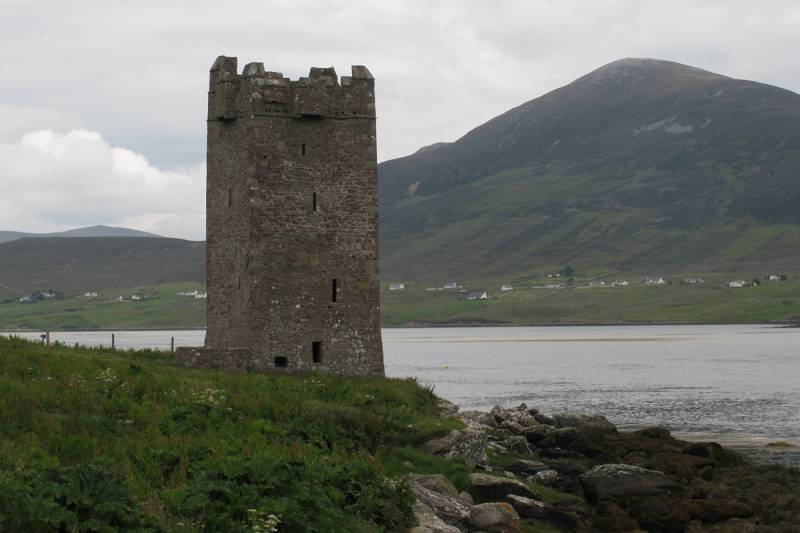
Information